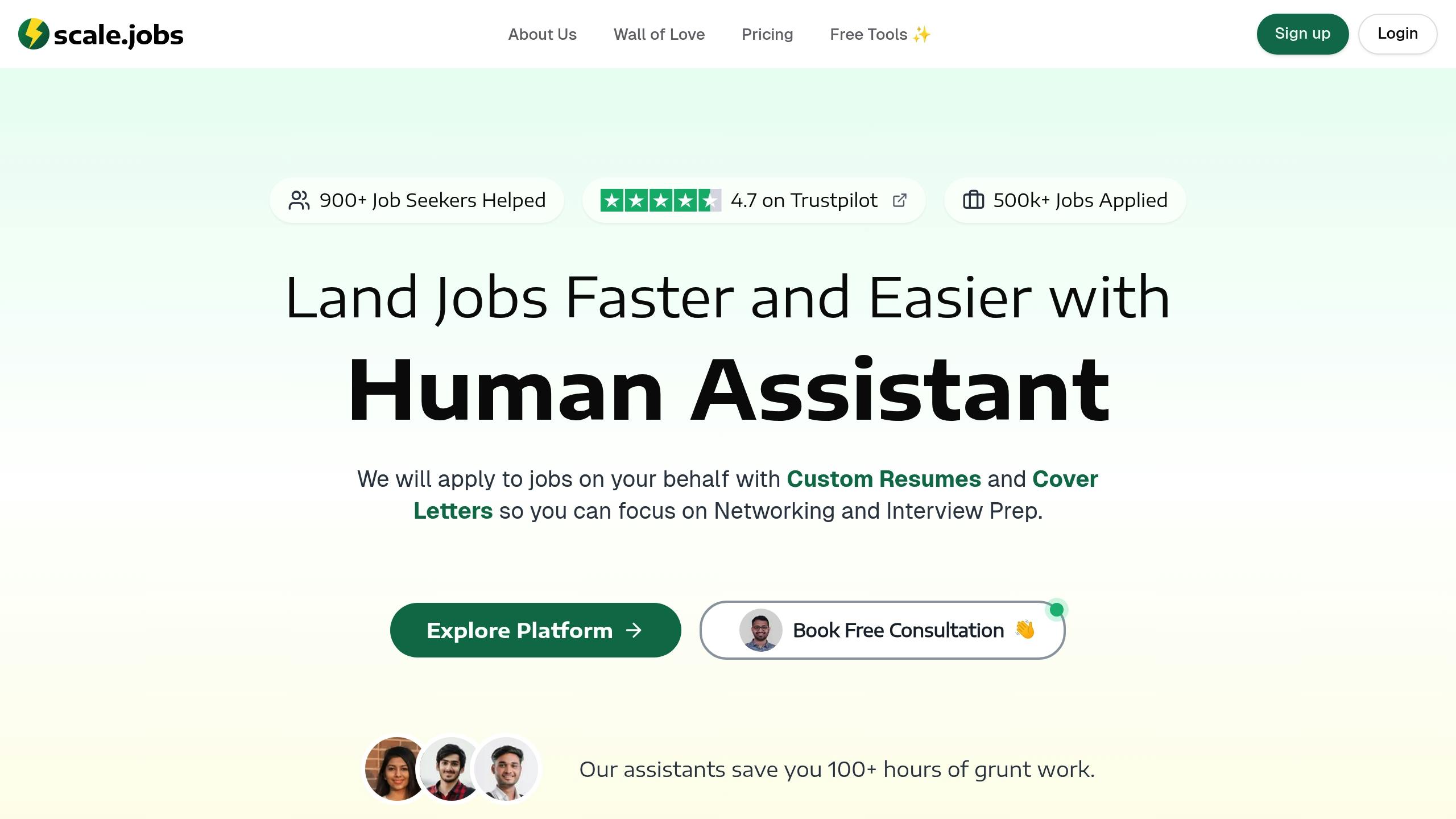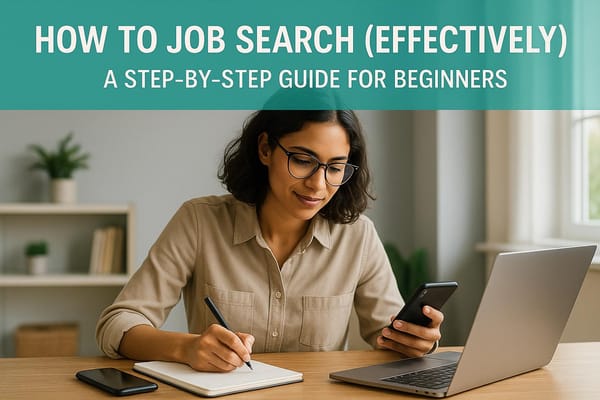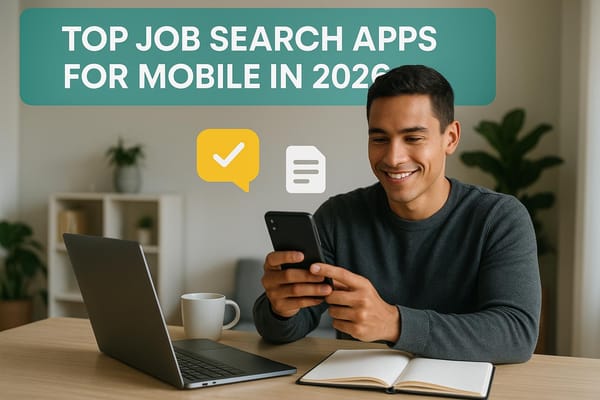Ultimate Guide to Communicating Skills in Interviews
Learn how to effectively communicate your skills in interviews using the STAR method, body language, and tailored storytelling for a lasting impression.

In interviews, how you communicate your skills can make or break your chances. Research shows 33% of hiring managers decide within 90 seconds whether to move forward with a candidate. Here's how you can stand out:
-
Key Challenges:
- 33% struggle to explain past experiences.
- 30% forget relevant examples.
- 30% fail to connect skills to the role.
-
What Employers Care About:
- 65% reject candidates for poor eye contact.
- 40% are put off by weak voice quality or lack of confidence.
-
What to Do:
- Identify your transferable skills (e.g., communication, leadership, problem-solving).
- Use the STAR method to structure your answers (Situation, Task, Action, Result).
- Practice your delivery with tools like Google Interview Warmup.
- Maintain confident body language (eye contact, posture, gestures).
-
After the Interview:
- Send a thank-you note within 24 hours.
- Follow up politely if you don’t hear back.
Mastering these steps will help you communicate your skills effectively and leave a positive impression.
Answering Behavioral Interview Questions Using the STAR Method
What Makes Skills Transferable
Transferable skills are abilities that apply across different roles, industries, and career paths. A 2018 McKinsey & Company report highlighted that the demand for these skills is on the rise, while the need for repetitive and manual tasks is decreasing .
Core Transferable Skills
These skills showcase your ability to succeed in various professional environments. For example, a 2017 study found that when garment workers were trained in skills like communication, time management, and problem-solving, factory productivity improved significantly - delivering a 250% return on investment .
"Think of transferable skills as part of your career tool belt. No matter what you learned in school or at a previous job, transferable skills are what every worker gains from each career experience...They are the skills that you can use in any professional setting."
– FlexJobs Career Experts
Common Skills List
Here are some transferable skills that employers value:
| Skill Category | Examples | Why Employers Value Them |
|---|---|---|
| Communication | Active listening, presentation, writing | Key for collaboration and client engagement |
| Leadership | Decision-making, delegation, motivation | Drives team performance and project success |
| Problem-solving | Critical thinking, analysis, creativity | Helps tackle challenges and improve workflows |
| Adaptability | Learning new skills, flexibility, resilience | Important for navigating change and uncertainty |
| Organization | Time management, planning, prioritization | Ensures tasks are completed efficiently and reliably |
Finding Your Skills
To uncover your transferable skills:
- Look at your daily tasks - hidden skills often emerge from routine responsibilities.
- Document your achievements, especially those with measurable outcomes.
- Ask colleagues or mentors for feedback to identify strengths you might overlook.
HR professionals often struggle to find candidates with strong transferable skills . By clearly presenting these abilities during interviews, you can set yourself apart and show your value, even if you're shifting industries or roles. Having a clear understanding of your skills is the first step to showcasing them effectively.
Getting Ready to Share Skills
Study the Job and Company
Take time to thoroughly examine the job description. Look for key skills and qualifications that the employer values most. Pay special attention to recurring themes or critical competencies highlighted in the job posting and company materials.
Here’s a simple way to match your skills to the job:
| Company Need | Your Transferable Skill | Supporting Evidence |
|---|---|---|
| Project Management | Leadership & Organization | Led a 5-person team to complete projects 20% ahead of schedule |
| Client Relations | Communication | Maintained a 95% client satisfaction rate across 50+ accounts |
| Process Improvement | Problem-solving | Implemented workflow changes, reducing task completion time by 35% |
With this framework, you can clearly see how your skills align with what the company is looking for, making it easier to tailor your application and interview responses.
Build Your Story
Develop a career story that connects your transferable skills to the role. This story should emphasize how your experiences and abilities meet the company’s needs.
"Your career story should highlight your values, decisions, and successes." - Christina Stokes, Senior Vice President and Director of Talent Acquisition
A great way to structure your examples is by using the STAR method (Situation, Task, Action, Result). For instance, if you’re a veteran, you might describe how your military leadership experience translates into handling project management or improving processes .
Once your story is crafted, use digital tools to practice and refine your delivery.
Prep Tools and Resources
Here are some resources to help you prepare for presenting your skills effectively:
- AI-Powered Interview Practice: Huru ($24.99/month) provides personalized feedback on your interview answers .
- Free Practice Tools: Google Interview Warmup offers free resources to help you analyze and improve your responses .
- Professional Feedback Platforms: Career.io uses AI to provide targeted advice on both content and delivery .
"One of the positive points in Huru is that it gives feedback based on exact answers, not just theoretical knowledge. Personally, Huru helped me identify some of my weaker points and improve them. I recommend Huru to anyone preparing for interviews." - Aleksejus, Trustpilot Reviewer
Spend time practicing answers to common interview questions, focusing on how you can showcase your skills and your eagerness to grow. Recording your responses can also help you spot areas where you might need to improve clarity or delivery.
How to Present Skills in Interviews
Speaking Tips
Use the STAR method to clearly explain your skills and experiences. This approach helps you stay organized and specific. Here's how it works:
| STAR Component | Details | Example |
|---|---|---|
| Situation | Provide context and background | Managed a 5-person team during a system migration |
| Task | Define your responsibility | Ensure zero downtime during the transition |
| Action | Describe the steps you took | Created a detailed migration plan, ran test simulations |
| Result | Share measurable outcomes | Completed migration 2 days early, saving $50,000 |
Speak at a steady pace and use "I" statements to highlight your role, while also acknowledging team efforts. When discussing technical skills, simplify complex concepts so they’re easy to understand. This shows not just your expertise but also your ability to communicate effectively.
Pair your words with strong body language for a complete presentation.
Body Language Tips
Your non-verbal cues can make a big impact. Research shows body language accounts for 55% of how others perceive you, tone of voice 38%, and actual words just 7% .
Here are some ways to enhance your body language:
- Maintain eye contact 50-70% of the time to show confidence and attentiveness.
- Sit or stand with a neutral, upright posture to appear engaged.
- Use natural hand gestures to emphasize points, keeping movements controlled.
- Subtly mirror the interviewer’s posture to build rapport.
- Smile genuinely when appropriate to create a positive and approachable vibe.
"Eye contact during an interview is important, as it shows the interviewer you are confident and ready to go. It also shows one more key thing: you are listening and engaged in the conversation." - Toni Frana, Career Development Manager at FlexJobs
Real Examples
Here are two examples of how storytelling and presentation come together during interviews:
- A client success manager stepped up when a colleague suddenly left, leaving their workload unmanaged. They reprioritized tasks based on company goals, automated routine processes, and consulted with their manager for support. As a result, client satisfaction stayed consistent, and service quality didn’t falter .
- A retail manager solved a tricky customer issue during prom season. When a customer’s online dress order was accidentally sold in-store, the manager found the same dress at another location, arranged professional pressing, and personally delivered it on prom day. They also included a gift card as an apology. This quick thinking earned a five-star review and highlighted their problem-solving and customer service skills .
"We read each other's body language and vocal delivery to make hundreds of snap judgments that affect whether we like, trust, and respect a person." - Eloise Eonnet, Muse career coach
These examples show how combining clear, structured storytelling with confident delivery can make a strong impression during interviews.
Handling Tough Interview Moments
This section focuses on how to confidently tackle challenging moments during interviews, building on your ability to present your skills effectively.
Explain Job Gaps
Job gaps are common - 9 out of 10 people experience them, according to the Bureau of Labor Statistics . The key is to address them honestly while highlighting how you used that time productively. Here's how to approach different situations:
| Reason for Gap | How to Address It | Example Response |
|---|---|---|
| Company Restructuring | Highlight professional development | "During the organizational changes that eliminated my position, I earned certifications in project management and advanced Excel to enhance my skillset." |
| Family Care | Focus on transferable skills | "While serving as the primary caregiver, I strengthened my time management and multitasking abilities, which directly apply to this role." |
| Health Recovery | Emphasize productive use of time | "During my recovery, I completed three professional certifications and maintained industry knowledge through online courses." |
"From the employer's perspective, they want assurance that whatever the reason was for the gap, it won't keep you from being successful at their organization. The most important thing is to not lie or deceive the employer during any part of the job application or hiring process."
– Katy Curameng, director of career planning and development at University of Massachusetts Global (UMass Global)
Responses to Challenging Questions
When faced with tough questions, stay composed and use structured, thoughtful answers.
Discussing Weaknesses: Turn them into opportunities for growth. For instance:
"When I first started working, I had a habit of interrupting my colleagues during meetings. I’ve since recognized the importance of active listening and now make a conscious effort to pause before responding, ensuring everyone feels heard" .
Explaining Company Changes: Keep your response positive and forward-looking. Try this:
"While I enjoyed my time at X company, I’m seeking a new challenge. Over the past three years, I’ve contributed to the development of several successful healthcare devices. I’m eager to continue creating impactful products while refining the marketing side of my product management skills, which this role offers" .
"A weakness question is never about the weakness. It's about overcoming, perseverance, positive change and learning."
– David J. Smith, David J. Smith Consulting, LLC
It’s not just about answering questions - it’s about showing your readiness to grow and improve.
Discuss Areas for Growth
When discussing areas for improvement, focus on skills relevant to the role but not critical. Show that you're actively working on them and committed to professional development.
Here’s an example of an effective response:
"One area I’m actively working on is improving my presentation skills. I’ve noticed that I sometimes speak too quickly at the beginning of presentations. To address this, I’ve been practicing voice modulation exercises and using conscious pausing techniques to maintain a steady, confident pace. These efforts are helping me become a more engaging and effective communicator" .
After the Interview
After your interview, take steps to strengthen the positive impression you left behind. Surprisingly, 57% of job seekers skip sending a thank-you note, according to Career Builder . Below, you'll find a clear guide to crafting thank-you messages and following up effectively to keep your candidacy on track.
Thank You Messages
Send a tailored thank-you note within 24 hours. This note should highlight key points from your conversation and emphasize how your skills align with the role.
Here's a simple structure to follow:
| Component | What to Include | Example |
|---|---|---|
| Opening | Show genuine gratitude | "Thank you for taking the time to discuss the Senior Product Manager role yesterday afternoon." |
| Specific Reference | Mention a memorable part of your discussion | "I particularly enjoyed our discussion about implementing agile methodologies in cross-functional teams." |
| Value Proposition | Highlight how your skills match the role | "Our conversation reinforced how my experience leading six successful product launches aligns with your team's goals." |
| Next Steps | Express enthusiasm and ask about the next steps | "I look forward to hearing about the next steps in the process. Please let me know if you need any additional information." |
"Remember, a thank-you note is an extra opportunity to make a good impression on your prospective employer, so keep your writing short, clear, and authentic." - Career Builder
Follow-up Steps
Stay engaged after your interview by following these steps without overwhelming your contact:
-
First Follow-up
If no timeline was mentioned, wait 1-2 weeks before sending a brief, positive message to reiterate your interest. -
Timeline-Based Follow-up
If a timeline was provided, follow up shortly after the deadline. If no response comes after two attempts, send a final, concise message to express your continued interest.
"You're staring at a blank screen and have no idea where to start. Even if you don't know what to write, it's critical that you send a post-interview follow-up email to express continued interest, reiterate what makes you a strong candidate and give gratitude for the interviewer's time. Keep it short and sincere." - Genevieve Northup, MBA, SHRM-CP, HCI-SPTD
Job Search Help Tools
With your interview strategy in place, boost your job search efforts by leveraging helpful tools and services designed to save time and improve your preparation.
Scale.jobs Services

Scale.jobs provides a practical solution for job seekers who want to focus more on interview preparation. Their virtual assistant service, available for $4/hour, takes care of repetitive and time-consuming application tasks:
| Service Component | Description | Benefit |
|---|---|---|
| Custom Applications | Resumes and cover letters tailored to each job | Ensures your application aligns with job requirements |
| Application Tracking | Visual records of submitted applications | Keeps a clear overview of your job search progress |
| Time Savings | Handles repetitive tasks | Frees up time for other priorities |
| Success Rate | 93% success rate within 3 months | Shortens the average job search duration from 5 months to 1–3 months |
"We're here to take the burden off your shoulders, so you can focus on what truly matters – preparing for interviews and building meaningful connections." - Leela Yanamaddi, Co-Founder
One success story highlights the impact of Scale.jobs: Apoorv Singh, after facing a layoff and a 60-day deadline on his H1B visa, secured three job offers in just four weeks. He even achieved a 75% salary increase .
If you're looking for free alternatives, there are also excellent tools available at no cost to help you prepare.
No-Cost Job Tools
Free tools can be a great way to enhance your interview preparation and refine how you present your skills:
| Tool Name | Key Features | Best For |
|---|---|---|
| Google Interview Warmup | AI-driven feedback, industry-specific questions | Practicing interviews in tech and digital roles |
| Careerflow Basic | Resume builder, job tracking | Organizing your applications |
| Teal Free Plan | Four-step interview preparation | Structured practice sessions |
| Resume ATS Checker | Keyword analysis, formatting suggestions | Optimizing your resume for applicant tracking systems |
Google Interview Warmup, for instance, is particularly useful for roles in data analytics, digital marketing, and IT support. It provides instant feedback to help you refine your responses .
"Interview Warmup helps you become familiar with key questions, refine your answers, and get more comfortable with the interview process." - Grow with Google
Wrapping It Up
Acing interviews requires careful preparation and a clear focus on showcasing your skills effectively. The secret to standing out? Highlighting your transferable skills through specific, measurable examples. For instance, when talking about leadership and managing complex tasks, use the STAR method to present tangible outcomes: "In my role at Crane & Jenkins as Head Bookkeeper for over five years, I spearheaded initiatives that increased revenue by 18% while fostering collaboration with my team" .
Here are three strategies to help you make a strong impression during your interview:
| Strategy | Why It Matters | What to Do |
|---|---|---|
| Skills Research | Aligns your background with the role | Analyze the job description and company thoroughly |
| Story Preparation | Makes your answers impactful and credible | Prepare 2-3 STAR examples for key skills |
| Follow-Up | Reflects professionalism and care | Send a personalized thank-you within 24 hours |
These tactics build on the STAR method and tailored application techniques we've covered earlier. By applying them, you'll be well-prepared to deliver a strong performance.
If managing job applications is overwhelming, platforms like Scale.jobs can help streamline the process, giving you more time to focus on interview prep. As Scale.jobs user Shobhit Datta shared:
"Scale.jobs has been an excellent help in applying for high volume of jobs which otherwise would be very time consuming... a high-volume approach helped me get few interview calls which I wasn't getting earlier" .
Treat every interview as a chance to show how your skills have grown and how they can bring value to the role you're pursuing. Be clear, honest, and confident in your responses, and let your achievements speak for themselves . With these methods, you'll be ready to showcase your skills and land your next opportunity.




